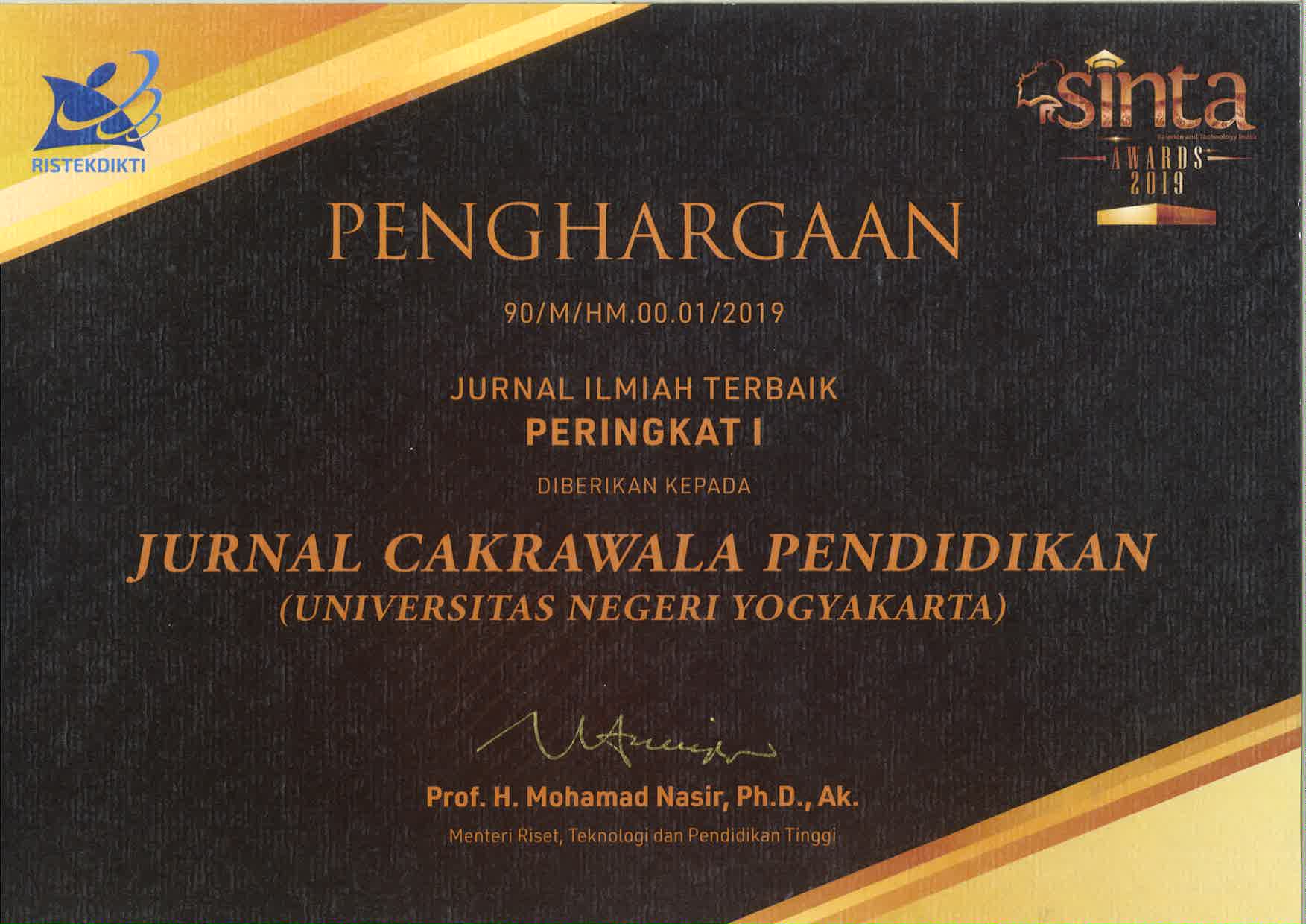Speak Up: Stepping up "show and tell" to enhance EFL students' speaking and communication skills
Downloads
Downloads
Ahmadi, M. R. (2018). The use of technology in English language learning. International Journal of Research in English Education (2018), 3(2), 115–125. https://doi.org/10.47689/xxia-ttipr-vol1-iss1-pp432-433
Al-Issa, A. S. M. (2005). The implications of the teacher educator's ideological role for the English language teaching system in Oman. Teaching Education, 16(4), 337–348. https://doi.org/10.1080/10476210500345656
Arum, R. P., Zarkasih Putro, K., Jatmiko, A., & Na'imah. (2022). Strategies to improve oral communication ability through early children's show and tell method. JOYCED: Journal of Early Childhood Education, 2(1), 1–15. https://doi.org/10.14421/joyced.2022.21-01
Bandura, A. (1997). Self-efficay: The excercise of control. Springer Reference.
Bandura, A. (2012, January). On the functional properties of perceived self-efficacy revisited. Journal of Management, 38(1), 9–44. https://doi.org/10.1177/0149206311410606
Bangun, B. K. (2018). Improving students' speaking skill by using show and tell method: A classroom action research. International Journal of Language Teaching and Education, 2(1), 41–48. https://doi.org/10.22437/ijolte.v2i1.4517
Binioli, I. M., Mogea, T., & Maukar, M. (2022). Improving students' speaking skill through show and tell method at grade IX students of Pax Christi Junior High School Manado. JoTELL Journal of Teaching English, 1(8), 958–966.
Bohning, G. (2001). Show-and-tell: Assessing oral language abilities. Reading Horizons: A Journal of Literacy and Language Arts, 42(2), 99–115. https://scholarworks.wmich.edu/reading_horizons
Braun, V., & Clarke, V. (2006). Using thematic analysis in psychology. Qualitative Research in Psychology, 3(2), 77–101.
Brown, H. D. (2001). Teaching by principles (2nd ed.). Pearson Education.
Buckingham, D. (2013). Beyond Technology_ Children's Learning in the Age of Digital Culture. Polity Press.
Creswell, J. W., & Creswell, J. D. (2018). Research design: Qualitative, quantitative, and mixed methods approaches. 5th Edition. SAGE Publication Inc.
Deci, E. L., & Ryan, R. M. (1985). Intrinsic Motivation and Self-Determination in Human Behaviour (E. Aronson (ed.)).
Dí¶rnyei, Z., & Murphey, T. (2003). Group dynamics in the language classroom. University Press.
Dí¶rnyei, Z., & Ryan, S. (2015). The Psychology of the language learner revisited. In The Psychology of the Person. Routledge. https://doi.org/10.4324/9780429482946
Dí¶rnyei, Z., & Ushioda, E. (2011). Motivation to learn a foreign/second language: a historical overview. In C. N. Candlin & D. R. Hall (Eds.), Teaching and Researching: Motivation (second). Pearson Education Limited. https://doi.org/10.4324/9781315833750-11
Fitriani, A., Rustan, & Yahya, A. (2020). Show and tell technique in teaching speaking skills at SMAN 2 Palopo. FOSTER: Journal of English Language Teaching, 1(2), 98–113. https://doi.org/10.24256/foster-jelt.v1i2.12
Fullan, M., & Langworthy, M. (2014). A rich seam: How new pedagogies find deep learning. Pearson.
Goh, C. C. M., & Burns, A. (2012). Teaching speaking: A holistic approach (J. C. Richards (ed.). Cambridge University Press.
Goleman, D. (2020). Emotional intelligence_ why it can matter more than IQ-Bloomsbury (2009) (25th Anniv). Bantam Books.
Graddol, D. (2006). English next why global English may mean the end of 'English as a Foreign Language.' British Council. https://doi.org/10.1080/00358537608453197
Green, A. (2020). Exploring language assessment and testing: Language in action. In Exploring Language Assessment and Testing: Language in Action. https://doi.org/10.4324/9781003105794
Harmer, J. (2015). The practice of english language teaching. In Longman Handbooks for Language Teaching Series.
Hattie, J., & Timperley, H. (2007). The power of feedback. Review of Educational Research, 77(1), 81–112. https://doi.org/10.3102/003465430298487
Horwitz, E. K. ., Horwitz, M. B., & Cope, J. (1986). Foreign language classroom anxiety. The Modern Language Journal, 70(2), 125–132. https://doi.org/10.1111/j.1540-4781.1986.tb05256.x
Hyland, K. (2006). English for academic purposes: An advanced Resources book. Routledge. https://doi.org/10.15864/ijelts.1407
Jenkins, H. (2006). Convergence Culture: Where Old and New Media Collide. New York University Press.
Kerr, P. (2016). Adaptive learning. ELT Journal, 70(1), 88–93. https://doi.org/10.1093/elt/ccv055
Krashen, S. D. (1987). Principles and Practice in Second Language Acquisition. Prentice-Hall International.
Lantolf, J. P., Thorne, S. L., & Poehner, M. E. (2015). Sociocultural theory and second language development. In B. VanPatten & J. Williams (Eds.), Theories in Second Language Acquisition: An Introduction (second, pp. 207–226). Routledge. https://doi.org/10.4324/9780203628942-9
Larsen-Freeman, D., & Anderson, M. (2011). Techniques and Principles in Language Teaching. Oxford University Press.
Mayer, R. E., & Moreno, R. M. (2016). Nine ways to reduce cognitive load in multimedia leaming. Educational Psychologist: A Special Issue of Educational Psychologist: Volume 38, 38(1), 43–52. https://doi.org/10.4324/9780203764770-6
Richards, J. C., & Rodgers, T. S. (2014). Approaches and methods in language teaching (third edition) (Third). Cambridge University Press. https://doi.org/10.1093/elt/ccw083
Rost, M. (2011). Teaching and researching listening 32(1). Pearson Education Limited. https://doi.org/10.1016/j.system.2003.11.004
Saldana, J. (2009). The coding manual for qualitative researchers - Johnny Saldana - Google Books. In SAGE Publications Ltd. https://doi.org/10.1017/CBO9781107415324.004
Salsabila, H., Ahsanu, M., Kariadi, M. T., & Riyadi, S. (2023). Implementing the "Show-and-Tell" method to improve students' speaking skills. Journal of English Literature, Linguistic, and Education, 4(2), 1–4.
Sawyer, R. K. (2014). The Cambridge handbook of the learning sciences. Cambridge University Press.
Tafjel, H., & Turner, J. C. (2004). The social identity theory of intergroup behavior. In J. T. Jost & J. Sidanius (Eds.), Political psychology: Key readings (pp. 276–293). Psychology Press. https://doi.org/https://doi.org/10.4324/9780203505984-16
Tevdovska, E. S. (2017). The impact of emotional intelligence in the context of language learning and teaching. SEEU Review, 12(1), 125–134. https://doi.org/10.1515/seeur-2017-0009
Vygotsky, L. (1978). Mind in society: The development of higher psychological process (M. Cole, V. John-Steiner, S. Scribner, & E. Souberman (eds.)). Harvard University Press.
Wright, T. (2005). Classroom management in language education. Palgrave Macmillan. https://doi.org/10.1093/elt/ccm038
Jurnal Cakrawala Pendidikan, Jurnal Ilmiah Pendidikan, with ISSN: 0216-1370, is published by the Institute of Education Development and Quality Assurance (LPPMP UNY). Cakrawala Pendidikan has been recently has been re-accredited by Indonesian Ministry of Education and Culture decision Number 230/E/KPT/2022 which is valid for five years since enacted on 30 December 2022.




























